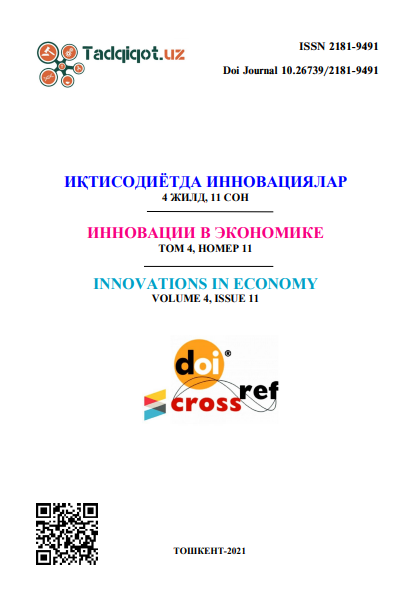РОЛЬ ГЛУБОКОГО РАСПОЗНАВАНИЯ ЭМОЦИЙ НА ЛИЦЕ В СИСТЕМЕ ГОСУДАРСТВА
Ключевые слова:
распознавание эмоций, мимика, классификация эмоций, онлайн, веб-камера, нейросетевое оценивание лицаАннотация
В этой статье я собираюсь упомянуть о роли распознавания глубинных эмоций лица в онлайн-разговоре с веб-камерой путем применения методов глубокого обучения в различных областях, таких как компьютерный анализ, распознавание эмоций, детекторы лжи, безопасность в аэропортах, банковские услуги, невербальное общение и т.д.
Библиографические ссылки
C. Darwin and P. Prodger, The expression of the emotions in man and animals. Oxford University Press, USA, 1998.
Y.-I. Tian, T. Kanade, and J. F. Cohn, “Recognizing action units for facial expression analysis,” IEEE Transactions on pattern analysisand machine intelligence, vol 23, no. 2, pp. 97–115, 2001.
P. Ekman and W. V. Friesen, “Constants across cultures in the face and emotion.” Journal of personality and social psychology, vol. 17, no. 2, pp. 124–129, 1971.
P. Ekman, “Strong evidence for universals in facial expressions: a reply to russell’s mistaken critique,” Psychological bulletin, vol. 115, no. 2, pp. 268–287, 1994.
D. Matsumoto, “More evidence for the universality of a contempt expression,” Motivation and Emotion, vol. 16, no. 4, pp. 363–368, 1992.
R. E. Jack, O. G. Garrod, H. Yu, R. Caldara, and P. G. Schyns, “Facial expressions of emotion are not culturally universal,” Proceedings of the National Academy of Sciences, vol. 109, no. 19, pp. 7241–7244, 2012.
Z. Zeng, M. Pantic, G. I. Roisman, and T. S. Huang, “A survey of affect recognition methods: Audio, visual, and spontaneous expressions,” IEEE transactions on pattern analysis and machine intelligence, vol. 31, no. 1, pp. 39–58, 2009.
E. Sariyanidi, H. Gunes, and A. Cavallaro, “Automatic analysis of facial affect: A survey of registration, representation, and recognition,” IEEE transactions on pattern analysis and machine intelligence, vol. 37, no. 6, pp. 1113–1133, 2015.
B. Martinez and M. F. Valstar, “Advances, challenges, and opportuni ties in automatic facial expression recognition,” in Advances in Face Detection and Facial Image Analysis. Springer, 2016, pp. 63–100.
P. Ekman, “Facial action coding system (facs),” A human face, 2002.
H. Gunes and B. Schuller, “Categorical and dimensional affect analysis in continuous input: Current trends and future directions,” Image and Vision Computing, vol. 31, no. 2, pp. 120–136, 2013.
M. B. Lewis and H. D. Ellis, “How we detect a face: A survey of psychological evidence,” Int. J. Imaging Syst. Technol., vol. 13, no. 1, pp. 3–7, 2003.
“www.fox.com/lietome.” .
B. L. Sheaffer, J. A. Golden, and P. Averett, “Facial expression recognition deficits and faulty learning: Implications for theoretical models and clinical applications.,” Int. J. Behav. Consult. Ther., vol. 5, no. 1, pp. 31–55, 2009.
Susskind JM, et al. (2008) Nat Neurosci 11:843–850
Chomsky N (1965) MIT Press, Cambridge, MA
Ekman, P., & Oster, H. (1979). Facial expressions of emotion. Annual Review of Psychology, 30(1), 527–554.
Trevisan, D. A., Bowering, M., & Birmingham, E. (2016). Alexithymia, but not autism spectrum disorder, may be related to the production of emotional facial expressions. Molecular Autism, 7(1), 46.)

